A-Z of surf
The gear, the guitars, the groups, the girls - it's MusicRadar's definitive guide

Amped
With the indie underground currently swooning to the sun bleached beach-pop of Best Coast, Real Estate and Wavves, time to look deeper at the '60s sound that so influences it - surf!
A is for… Amped
According to surf guitar deity Dick Dale, he blew the nuts off 48 Fender amps before he managed to persuade Leo Fender and his designer Freddy Tavares to build him a more powerful unit. Leo and Freddy came up with an 85-watt output transformer that peaked at 100-watts and coupled it with a specially designed 15-inch JBL speaker.
Dick’s new Fender Showman amp gave him the volume he needed to own his audiences’ eardrums and we all got more powerful backline as a result.
Interesting fact: Freddy Tavares played the famous steel guitar lick at the beginning of every Looney Tunes cartoon - check this YouTube clip for proof. Th-Th-Th-That’s all folks!
A is also for… The Ambassadors
The Ambassadors were a British instrumental band of the early '60s that recorded a couple of great surf tunes for legendary producer and troubled genius, Joe Meek. The tracks, Surfin’ John Brown and Big Breaker, are available on the Joe Meek: The RGM Legacy - Portrait of a Genius boxset. Worth seeking out if only for the otherworldly guitar sounds and righteous drumming.

Black Sand Beach
B is for… Black Sand Beach
You’d have to go a long way to beat the ice cool brilliance of Eleki legend Yūzō Kayama chopping his way through Black Sand Beach with his band, The Launchers - watch this YouTube clip for proof.
Multi-talented Yūzō was also an actor, starring in a series of ‘Wakadaish’ ('Young General') movies: a Japanese take on teen scene flicks like Beach Blanket Bingo and Cliff Richard’s camp classic, Summer Holiday (1963). Seven Samurai director, Akira Kurosawa, even cast Yūzō in a couple of his films.
While he was obviously no slouch in front of the camera, it’s Yūzō's awesome Mosrite guitar and Teisco amp tone on Black Sand Beach that’ll keep this Japanese surf master on our Xmas card list.
B is also for… The Bambi Molesters
It’s almost impossible to think of great surf music without conjuring up images of, er, Croatia. Well, it will be after you hear The Bambi Molesters. Brilliantly daft name aside, these guys have nailed the classic surf sound in a big way. The band’s new album As The Dark Wave Swells is released 19 July 2010 and it’s a doozy.

Cowabunga!
C is for… Cowabunga!
We’re talking rad surf wordage. It’s what separates the dweebs from the dudes, daddios. Anything else is just bogus, a bummer... certainly not boss. You won’t be impressing the honeys if you’re a geek, a dork or just plain gnarly. The beach bunnies won’t be stoked and you’ll just be another ‘hodad’ clogging up the beach for the real surfers.
Getting bored with this yet? Let’s leave it to professionals then, like this classic surfer dude and the stoner legend that was Jeff Spicoli - watch and learn via this sweeet YouTube clip…
C is also for… Charvel Surfcaster
Originally produced between 1992 and 1994, the Charvel Surfcaster guitar came across as a gene-splicing experiment between a Rickenbacker 360, a Fender Jazzmaster and a set of Danelectro lipstick tube pickups.
Available in vibrato-equipped, hardtail and 12-string formats, Charvel’s old school rocker preempted the retro guitar boom of the noughties. Feast your peepers on a recent custom shop Surfcaster right here. For more info on vintage Charvel guitars, visit www.charvelusa.com.

Dennis Wilson
D is for… Dennis Wilson
Beach Boy drummer Dennis Wilson was cooler than an ice lolly dressed like Elvis. He was the Beach Boy that actually surfed - it was Dennis who suggested that the group write about surfing in the first place.
Depending on your point of view, his 1977 solo album Pacific Ocean Blue is often regarded a masterpiece (listen to River Song here) but one of Dennis’ greatest contributions to pop culture was his appearance in the 1971 nihilistic road movie Two-Lane Blacktop (watch this Critics' Pick doc for proof).
Wilson played The Mechanic while fellow musician James Taylor portrayed The Driver. The movie follows the characters blasting across America in a ’55 Chevy earning money by street racing. Nothing much happens but it's very, very cool.
D is also for… Dick Heads
Dick Heads is the affectionate name adopted by the many obsessed fans of Dick Dale. Isn’t that nice? You can even buy badges and t-shirts emblazoned with the legend ‘I’m a Dick Head.’ Fans of James Blunt or could probably work up their own versions too…
In other news, one of Dick’s fans has put together an interesting online museum dedicated to his hero - head here for info.

Eleki
E is for… Eleki
Japan was a hot bed of killer surf or Eleki (‘electric guitar’) music in the early '60s. The Eleki movement was kicked off by The Ventures' 1962 visit to Japan.
We’ve already looked at Yūzō Kayama’s Black Sand Beach (see ‘B’). Well, Yūzō’s main rival was one Takeshi ‘Terry’ Terauchi. Terry tore it up Dick Dale-style on hits like Kanjincho (listen here) and a version of The Ventures' classic Diamond Head (listen here).
Both Yūzō and Terry are still going strong and so is the Japanese tradition of great instrumental guitar music. It surfs on in young bands like Rat Holic - their tune Fat Rat Surfer is killer.
E is also for… Early days
Surf didn’t come out of nowhere. Credit for the big twangy guitar sound goes to Duane Eddy and his producer, and cult singer/songwriter, Lee Hazlewood. Tracks like Eddy’s 1958 recording of Ramrod (watch a 1974 version here) laid the foundation for the surf music that followed.

Fender
F is for… Fender
For most aficionados Fender guitars are knitted into the DNA of surf guitar music. It’s the bright response of those single-coil pickups through a reverb-drenched Fender amp that delivers the archetypal surf tone.
The vibrato arm is essential too which explains why the Telecaster has never been as popular with surf guitarists as the Stratocaster, Jaguar and Jazzmaster models that have always topped their wish-lists.
The current Fender range covers every surf fanatic’s needs from the Custom Shop Dick Dale Signature Stratocaster in tasty Chartreuse Sparkle to the more affordable Classic Player Jazzmaster Special.
We’ll take either one thanks!
F is also for… Five-O!
That’s as in Hawaii Five-O, a cracking police drama with a killer theme tune (listen here for proof) that ran from 1968 to 1980. The Ventures play a cool surf version of said theme, complete with some sizzling drumming, tasty guitar licks and terrible shirts - check it out here. Book ‘em Dano! What do you mean you’ve never heard that line before? Dude, we must be getting old…

Guitar Porn!
G is for... Guitar Porn!
Candy Apple Red, Sea Foam Green, Shoreline Gold, Fiesta Red… it’s enough to have any true guitar pervert rubbing their thighs with excitement.
In the late '50s and early '60s Fender guitars became especially beautiful, resplendent in the same Dupont paints used on Cadillac, Chevrolet and Chrysler cars. Fender guitars were designed to be practical but that didn’t mean they couldn’t look their best. Custom colours and details like matching headstocks rocketed Fender desirability into the stratosphere.
Hungry for more? This vintage fan site is a fat sandwich full of Fender facts, figures and pics while there are some cool vintage guitar photos on the Offset Guitars website too - click around here for some real eye candy! Still want more vintage guitar porn? Check out our gallery from 2010's International Vintage Show at Frankfurt Musikmesse.
G is also for... Gorgonzola
As in cheesy. Californian surfing culture was cool, hip… switched on. Not that you’d get that from the ‘spawn of The Stepford Wives' vibe of '60s teen surf movies. The classic example is Beach Blanket Bingo (check the original trailer via YouTube) with teen idol Frankie Avalon and Annette Funicello singing about blankets made for two. Seriously. For more shoreline-based disasters, head to SlateV's frightening rundown of The Worst Beach Movies Ever.

Hank Marvin
H is for... Hank Marvin
Hugely influential British legends Hank Marvin and his group The Shadows are regarded more as a instrumental combo than a surf band by their legion of fans. That distinction was slight enough that the band were marketed as a surf group in the USA.
A pair of compilation albums, The Shadows Know and Surfing with The Shadows, were released Stateside to capitalise on the success of homegrown talent like The Ventures, Dick Dale And His Del-Tones and The Surfaris.
You can hear how they might have given California’s surf stars sleepless nights in Hank’s stunning Stratocaster tones on songs like Wonderful Land - click here for a classic YouTube clip from the Rudi Carell Show in 1962.
H is also for… Haulin’ Hearse
Haulin’ Hearse (listen here) is a song by spooky surf band The Ghastly Ones. Formed in Van Nuys, California in 1996 The Ghastly Ones mix classic surf sounds with an old school horror movie image. The group’s lead guitarist Garrett ‘Dr Lehos’ Immel collects and restores vintage Fender and Mosrite gear.

Influence
I is for… Influence
The influence of surf music is everywhere. You can hear it echoed in the TV spy themes of the '60s and in the drumming of Keith Moon of The Who.
Moon was such a huge surf fan that he bought Dick Dale and Beach Boys records by mail order from the States. Over the years he would on occasion run through The Beach Boys' version of Barbara Ann with the rest of The Who. Don't believe us? Watch this YouTube treat!
You can also hear the influence of surf in the beautiful guitar work on Chris Isaak’s Wicked Game - and thus a good excuse to watch this classic music video. Hey, it was even shot on a beach!
I is also for… International
You want international surf music? We’ve discussed bands from the likes of the US, UK, Japan and Croatia so let’s throw another nation into the mix. We proudly present Rumblefish from Istanbul in Turkey - their tune Last Wave is great!

Joe Satriani
J is for… Joe Satriani
Okay, the closest Joe Satriani’s 1987 album Surfing With The Alien comes to being a surf record is having the word ‘surfing’ in the title. Oh, and there's a surfboard on the cover. But Satch’s second LP is relevant because it proved that instrumental guitar music could sell to people that weren’t just guitarists.
The album reached number 29 on the Billboard 200 chart in 1987. The following album 1989’s Flying In A Blue Dream did even better. So, the lesson appears to be, even if you can’t find a decent singer you still have a chance of scoring big. Just ask Joe.
J is also for… James Bond
Spy guitar was an offshoot of surf music. The classic guitar tone used by Vic Flick when he recorded the James Bond theme is pure surf. In fact, drop the horns, stick Animal from The Muppets in on drums and you’ve got a tidy wee surf track there - watch this Surf King clip for proof. That said, not sure John Barry would approve…
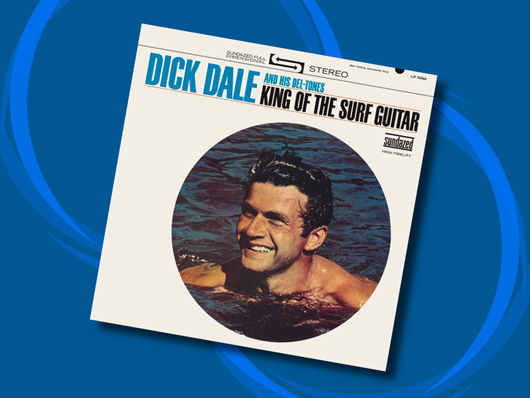
King of the Surf Guitar
K is for... King of the Surf Guitar
No guitarist has made a bigger contribution to the sound and folklore of surf guitar music than The King Of The Surf Guitar - the mighty Mr Dick Dale!
There’s nothing ordinary about Dale. He plays a left-handed Fender Stratocaster, strung the ‘wrong way’ around with heavy ass strings - .016, .018, .020, .038, .048 and .058 - at the kind of volume that could knock an elephant on its side.
Dick can be arrogant and refers to himself in the third person (your author has heard him do it!) but he just knows how great he is. Let’s face it, surf guitar could never have happened without him.
K is also for... Killers!
Jimi Hendrix allegedly once boasted that he’d killed surf music but it was doomed as soon as The Beatles hit the US in 1964. Surf mutated in garage rock and America’s greatest band, The Beach Boys, moved with the times and released records that challenged The Beatles every step of the way. But the current global surf scene is testament to the fact that the music didn’t die… it was just hibernating.

Los Straitjackets
L is for… Los Straitjackets
Formed in Nashville, Tennessee in 1988, Los Straitjackets are a brilliant surf group featuring guitarists Eddie Angel and Danny Amis, bassist Pete Curry and drummer Jason ‘Teen Beat’ Smay. The group are famous for wearing Mexican wrestling masks.
Los Straitjackets have released a bunch of great records: Supersonic Guitars In 3D (2003) and 2007’s Rock En Español Vol. 1 are particularly essential.
The band also contributed a great cover of The Munsters Theme (listen here) to the 1998 Halloween Hootenanny album released on Rob Zombie’s Zombie A Go-Go Records, a great compilation that also features The Bomboras, The Ghastly Ones and the awesome Southern Culture On The Skids.
L is also for… Laramie Dean
Laramie Dean is a surf punk guitarist from New York. A Fender endorsee, Laramie uses more distortion than you’re average surf guitarist. His cover of Ghost Riders In The Sky (watch it live here) is typical of his approach. Subtle it ain’t.

Mosrite
M is for… Mosrite
Mosrite guitars are as much a part of surf culture as Volkswagen campers and hot girls in bikinis. They were played by some of the cream of surf guitar - The Ventures and Yūzō Kayama for example - and gave Fender a run for their money in the heyday of surf music.
Founded in Bakersfield, California in the ‘50s by the late great Semie Moseley, Mosrite guitars had distinctive offset bodies, high output pickups and slim neck profiles. The guitars later became associated with famous users like Johnny Ramone (erm, The Ramones) and Kurt Cobain. The company is still in business - visit mosriteguitars.com for more.
M is also for… Mach IV
The Mach IV is a surf-style six-string made by DiPinto Guitars. The guitar is available in hardtail or vibrato-equipped formats in a range of colours. Surfing DiPinto players include Los Straitjackets (silver sparkle Galaxie 4 models), Dick Dale (lefty Belvedere) and The Dead Rocks, Brazil’s self-described "best surf music combo". Big words, Brazilian fellas…

Nokie Edwards
N is for… Nokie Edwards
While his guitar playing partner in The Ventures, Bob Bogle, sadly passed away in June 2009, Nokie Edwards is still touring with the band.
Born Nole Floyd Edwards in Oklahoma in 1935, Nokie played guitar with Bakersfield country legend Buck Owens in the late '50s before joining fellow guitarists Bogle and Don Wilson in The Ventures.
While Nokie is obviously best known for his surf guitar work, and later rock orientated playing, with The Ventures he can play some mean country guitar too - check this Steel Rag classic. His website is also home to the official US Nokie Edwards Fan Club.
N is also for… Neptune Bound
Neptune Bound: The Ultimate Danelectro Guitar Guide by Doug Tulloch is a cracking resource on Nathan Daniel’s well-respected guitars. Young surf guitarists loved Danelectro axes because they were affordable yet they sounded and played great. You can also do some Dano homework on this great History of Danelectro website.

Orange County
O is for... Orange County
Although the genre is popular just about anywhere on the planet, Orange County, California is the spiritual home of surf music. Huntington Beach - or Surf City USA as it’s also known - has a Surfing Hall of Fame, a Hall of Fame and the International Surf Museum. These guys aren’t messing around!
The town even gets a shout-out in the Beach Boys classic Surfin‘ Safari (watch here), along with Malibu and various other surf locations. Huntingdon Beach also gets a mention in The Surfaris' Surfer Joe, as this jukebox clip attests.
O is also for… Obscure
As with other music genres such as rockabilly, blues and garage rock, surf has its fair share of obscure treasures - you just have to know where to look…
Also, get your fill of the huge number of current surf bands on the Surf Music website or at Surf Band. Chances are you’ll find something you like.

Precision
P is for… Precision
We’re talking about the Fender Precision bass. While you may see old clips of surf bands toting Danelectro and Mosrite basses, the Fender Precision was by far the most popular four-string with the surf set.
The P Bass was born in 1951 as a four-string brother to the Telecaster. This early incarnation became best known as the ‘Telecaster Bass’ when it was later reissued in 1968. After rounding off the edges in 1953, Fender went for a full revamp of the P Bass in 1957, giving the instrument a contoured look to match the company’s Stratocaster guitar. A classic was born.
P is also for… Pipeline
Pipeline is a classic surf record by The Chantays. Here's a YouTube clip of the band performing the song on The Lawrence Welk Show in 1963, dressed like The Beatles for no apparent reason. Dick Dale and the late Texan blues legend Stevie Ray Vaughan later recorded the song as a guitar duet. Check out Dick’s incredible hair in this promo clip - terrifying!
By the way, Pipeline is also the name of a magazine dedicated to instrumental rock.

Quentin Tarantino
Q is for… Quentin Tarantino
Love him or loathe him, Quentin Tarantino has great taste. He gave classic surf music the kiss of life when he used Dick Dale’s 1962 single Misirlou (watch it here) to kick off his 1994 movie Pulp Fiction.
While Dale’s appearance on the soundtrack no doubt added some new ‘Dick Heads’ to his fan base, there were other great surf tracks in Pulp Fiction. There was Bullwinkle Part II by The Centurians and the brilliant Surf Rider by The Lively Ones used in the closing scene of the film. Click here to turn back the clock.
Interviewed about his choice of music for Quentin Tarantino: The Cinema of Cool, Tarantino said, "To me (surf) just sounds like rock 'n' roll, even Morricone music. It sounds like rock 'n' roll spaghetti Western music…" Morricone or Mosrite, all we know is we like what we hear!
Q is also for... Quintessential
There are so many podcasts and online radio shows dedicated to surf that you might not have to drop any money on some CDs for a while. If you are ready to splash out on some classic surf bag a few ‘best of’ collections like Walk, Don’t Run, The Best of The Ventures and Dick Dale & His Deltones: Greatest Hits 1961-1976. They’ll get you on your way.
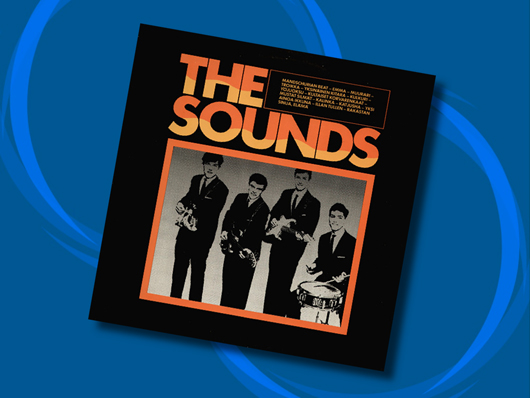
Rautalanka
R is for… Rautalanka
Rautalanka was a style of instrumental guitar music that was popular in Finland in the early '60s. Incidentally, ‘rautalanka’ is Finnish for ‘iron wire,’ as in electric guitar strings.
The music was heavily influenced by bands like The Shadows and The Ventures. Like those bands, rautalanka guitarists preferred the sound of single coil pickup so Fender Strats were popular.
The first rautalanka record was Emma by The Sounds (watch it here) which was released in 1963. Of course, The Beatles put paid to the instrumental rautalanka bands when they arrived on the scene, just like they had everywhere else in the world in 1964.
R is also for… Reverb
When he was busy pioneering the surf guitar sound Dick Dale claims he didn’t use reverb, he actually used the tremolo circuit on his Fender amplifier. Reverb has become the defining sound of surf guitar however. It makes the guitar signal sound wet… just like the sea, natch.
You can get all sorts of digital reverb units these days but we still crave the old school ‘63 Fender Tube Reverb - check it out at Fender's site here.

Surf Guitar 101
S is for… Surf Guitar 101
Surf Guitar 101 is a website and podcast series dedicated to all things twangy, windswept and reverberated. The site has forums and news about shows and events. Surf Guitar 101 also holds a convention every August in Los Alamitos, California.
You can subscribe to the podcast series, which features bands from the '60s to present day, via iTunes or download episodes from the Surf Guitar 101 website. If you’re looking for a potent mix of surf music to dip your toe into this podcast is a great place to start. Tell ‘em we sent you.
S is also for… String music
String music was a genre of Thai pop music that was influenced by Western surf and instrumental rock band. The style was also known as 'shadow music' in honour of Cliff Richard’s old muckers, The Shadows. One of the movement's best-loved bands was The Son Of P.M. (listen here) - you can find out more about them and string music at this great fansite.
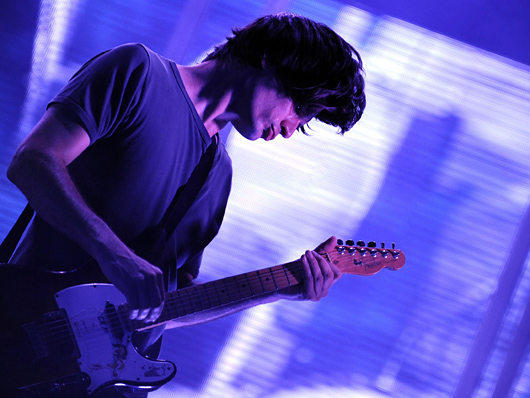
Tremolo picking
T is for… Tremolo picking
The second best exercise for your wrist, tremolo picking is a surf guitar essential. The technique was popularised by our old amigo Dick Dale. It’s since become a staple of metal guitar which is one reason why Dick is referred to as The Father of Heavy Metal by some folk.
The other reason is sheer volume (see ‘A’). Tremolo picking basically involves picking a guitar string back and forth quickly. The same technique is used by mandolin players. You can see Jason Lee of Next Level Guitar demonstrating tremolo picking on this clip.
So, what’s the other best exercise for your wrist? Why, skipping of course. What did you think we meant?
T is also for… The Trashmen
The Trashmen’s annoying classic Surfin’ Bird was a US top ten hit in 1963. A staple of Vietnam movie soundtracks, Surfin’ Bird was a mash-up of two songs by a band called The Rivingtons - namely, Papa-Oom-Mow-Mow and The Bird's The Word. The song’s appearance on Family Guy (click here, you know you want to…) in 2008 took it to number eight of the iTunes rock top ten.

Underground Fire
U is for… Underground Fire
Underground Fire is a 1969 track by The Ventures. Now, we’ve obviously mentioned The Ventures elsewhere - and singled out Nokie Edwards for praise - but Underground Fire is worth checking out for a couple of reasons.
The first is that it illustrates how a great band can survive changes in musical fashion without compromising their core ethic - it’s not really surf, but it’s still an instrumental.
The other reason is to get you to listen to one of the most enjoyably ludicrous adverts for a record you’ll ever hear. Listen to this YouTube clip - and listen to the end. It’s worth it. It is, after all, a ‘harbinger of the flames… yet to come.’
U is also for… Unsteady Freddie
Unsteady Freddie is the host of an online surf-centric radio show called Twang Shebang. The show, which can be streamed or downloaded, features a cracking mix of modern surf bands from around the world. It’s infectious, baby!

The Ventures
V is for… The Ventures
Let’s just say, for argument's sake, that Dick Dale was surf’s greatest artist. That would make The Ventures its greatest band. The band’s legendary single Walk, Don’t Run (watch a live clip from 1964 here) is just one highlight in a career that’s still ongoing.
While the band never recaptured their fame in the US after the '60s ended, The Ventures remain big in Japan and still regularly tour there. In fact, the Japanese government awarded The Ventures the Order of the Rising Sun, Gold Rays and Rosette in 2010 in recognition of their contribution to cultural exchange between the US and Japan.
V is also for… Vibrato
Wiggling a guitar’s vibrato arm is part of an essential surf trifecta that includes a sopping wet reverb sound and plenty of tremolo picking. Many guitarists refer to a guitar’s vibrato arm as a ‘tremolo’ and the tremolo effect produced by amplifiers and stomp boxes as ‘vibrato.’ That’s the wrong way round. This anomaly is attributed to Leo Fender who got the terms mixed up.
He was busy changing the world though, so we’ll let him off.

Woodies
W is for… Woodies
As you can see on this 'Woodies on the Wharf' YouTube clip, ‘woodies’ was the nickname for American cars with visible rear frames made of, you guessed it, wood.
Produced by various manufacturers from the '30s to the early '50s these cars became hugely popular with surfers of the early '60s before they discovered Volkswagens. Woodies were cheap to buy and repair and, thanks to their sheer size, could hold plenty of people and their surfboards.
As Jan and Dean sang in their 1963 number one hit record Surf City (watch this amazing clip!), "I bought a '30 Ford wagon/And we call it a woody…"
Incidentally, the ‘EMHO’ woody that Aerosmith’s Steven Tyler sings about in F.I.N.E. from Pump (1989) is a different thing entirely…
W is also for… Wipe Out
Wipe Out, one of the best loved surf records of all time, was a 1963 hit for Glendora, California's most famous sons, The Surfaris (listen here). The song features some astonishing drumming from Ron Wilson who was only in his teens at the time of recording the tune. The solo was a sped up version of his Charter Oak High School marching band's drum cadence.
Wipe Out has been covered countless times. Our favourite covers are by The Ventures (watch it played live here) and, of course, Animal from The Muppet Show. Watch some prime Muppet madness here…
"WOMEN! WOMEN! WOMEN!" Ahem.

XXL
X is for… XXL
While most of us are content to play surf music on cool guitars on dry land, real surfers obviously like to get their feet wet on occasion. Some seek out some truly XXL waves like this.
Australian surfwear manufacturer Billabong holds an annual XXL Big Wave Awards dedicated to these brave/reckless souls. That said, the winners do get $50,000 so it’s not all about risking a wipe out or sand facial. Some waves are truly monstrous - the video clip of this wave in particular is just… mental.
You don’t get many like that in Skegness.
X is also for… X Records
X Records was the label that released the first Beach Boys single, Surfin’ (listen here) in 1961. Until the single’s release the boys were known as The Pendletones. It was only when they received the first batch of singles that they noticed that someone at their record company had changed their name to The Beach Boys. It was too late to reprint the labels so the name stuck.
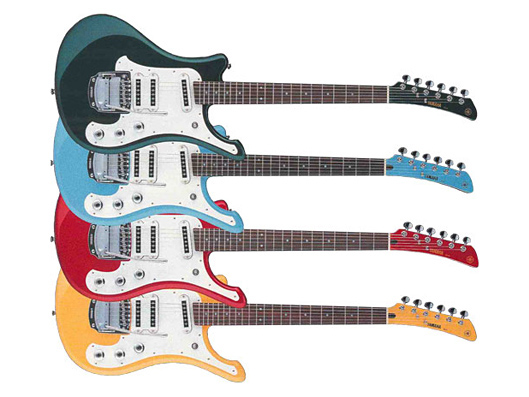
Yamaha SG7
Y is for… Yamaha SG7
The SG7 was the first Yamaha electric guitar unleashed in 1966. Featuring an asymmetrical body with an elongated horn on the treble side and a hockey stick style headstock, the guitar was designed with the input of Japanese Eleki legend Takeshi ‘Terry’ Terauchi (see ‘E’).
The SG7 was reissued in 2000 as the SGV300 in a range of finishes: Black, Canary Yellow, Metallic Red and Pearl Green. A deluxe SG800 model was also released in the same year. It’s become a modern surf classic.
You can see the The Ghastly Ones battling Flying Saucers Over Van Nuys with their SGV300 guitars and matching SBV500 bass on this YouTube clip. Yeah, we want one too…
Y is also for… You Still Believe In Me
The beautiful second track from Pet Sounds (1966) by The Beach Boys, You Still Believe In Me is a testament to both the genius of Brian Wilson and to just how far the band had progressed since the days of Surfin’ Safari. Watch this Behind The Sounds documentary clip for the story behind the song.
Like The Beatles, The Beach Boys' music had matured far beyond only pleasing a teen audience… Although neither groups’ earlier efforts could hardly be written off as throwaway!
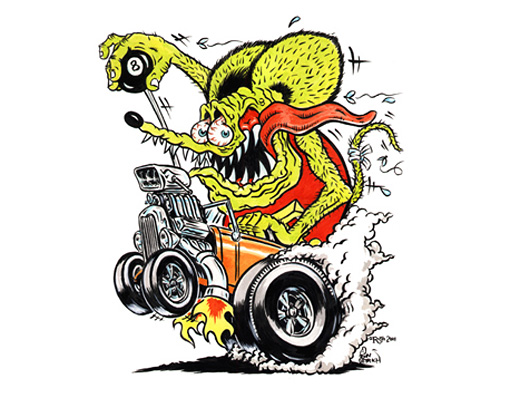
Zany!
Z is for… Zany!
The surf scene produced its fair share of eccentric characters. As pioneers of the Kustom Kulture scene artists Ed ‘Big Daddy’ Roth and Kenny ‘Von Dutch’ Howard were two of the most important.
Roth’s larger than life persona and unique custom cars made him a favourite with surfer kids but it’s his Rat Fink character that has made him an immortal. Long before he was a clothing brand, Von Dutch was the king of pinstriping - check this amazing clip to see pinstriping in action.
Both men are no longer with us but their influence can still be seen at every custom car and motorcycle show and on countless band posters.
Z is also for… Z-Surf
Z-Surf is a surfer resource site that posts user-submitted content. Some of the surfing videos and images are incredible. The site also features beach webcams just in case you miss being by the seaside - although surfers probably use the videos for a more practical reason…
Liked this? Now read: 35 Fender Stratocaster stars: part 1
Connect with MusicRadar: via Twitter, Facebook and YouTube
Get MusicRadar straight to your inbox: Sign up for the free weekly newsletter